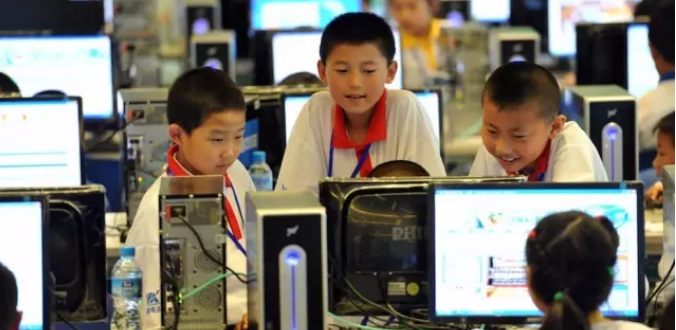外交政策杂志 翻译天堂 2016-09-28

Chinese Is Not a Backward Language
Even in the age of China’s social media boom, with billion-dollar valuations for Beijing-based IT start-ups, prejudice against the Chinese language is alive and well. One would be forgiven for thinking that by 2016, the 20th century’s widespread critiques of racism, colonialism, and Social Darwinism would have sounded the death knell of 19th-century Orientalism, which viewed China and the Chinese language through a condescending, colonialist lens. At the least, one might hope that if notions of Chinese Otherness were still with us, those who carry on the tradition of these threadbare ideas would generally be seen as archaically Eurocentric and gauche — the dross of airport bookshop paperbacks, unworthy of serious engagement. If only. Nineteenth-century understandings of China persist, not only surviving the decline of Social Darwinism and race science, but flourishing in this new century, driven primarily by arguments about China’s unfitness for modern technology and media.即便在这个中国社交媒体发达的时代,伴随着许多北京的亿万科技创业公司,人们对于中文的偏见始终存在。常人会误以为到了2016年,20世纪对于种族歧视、殖民主义和社会进化论的普遍批判声会敲响19世纪以高傲、殖民者的角度贬视中国和中文之东方主义的丧钟。或者我们会希望即便对于中国的差异性观念仍在,那些有着陈腐观念的人至少会被视为古板的西方中心主义者,如同 机场书店的廉价平装书,不值认真一读。可惜事实并非如此! 大众对于中国的认知还停留在19世纪,历经社会进化论和种族科学的没落,这种认知在这新世纪里依然十分普遍,而其原因主要归咎于倡导中国不适合现代科技与媒体的理论。
Call it Orientalism 2.0.姑且称它为东方主义2.0。
In a recent article for the New Yorker, award-winning science fiction author Ted Chiang speculates on an alternate reality in which China possesses an alphabetic or syllabic writing system, like most other societies on earth. Until then, he argues, China’s script, and its supposed resistance to the keyboard and the keypad, will pose an obstacle to wider literacy and form “a millstone around Chinese culture’s neck” — an intriguing claim when nationwide literacy in China is upward of 95 percent and when China has long since adopted and augmented the QWERTY keyboard to input Chinese characters rapidly and efficiently on computers.在最近的一篇《纽约客》文章里,屡获殊荣的科幻作家姜峰楠假想于另一个世界里中国使用一套字母或音节书写系统,如同现今大多数其他社会。他认为现今中文字母和其假设的键盘不适用,而这将构成广泛识字的障碍,并形成「套在中国文化脖子上的沉重负担」。这是一个十分诡趣的说法,尤其当全中国的识字率高于95%,而中国也早已采用和增强能够快速有效在电脑上输入中文的QWERTY键盘。
Chiang’s not alone in trying to use Chinese information technologies as a way to critique Chinese writing; one Chinese typewriter recently appeared at the Museum of the History of Science in Oxford in a special exhibit tellingly titled “Eccentricity: Unexpected Objects and Irregular Behavior.” Elsewhere, one can find online exchanges in which readers are assured that Chinese computing is a “piece of cake,” provided users adhere closely to “600 steps.”姜峰楠并不是唯一一个用中国资讯科技来批评中文文字的人;最近一台在牛津科学历史博物馆展出的中国打字机浅藏涵义地取名为:「古怪:意外之物与非常行为」。网路上网友们在讨论后确信只要用户严格按照「600个步骤」去做,那中文电脑运算只是「小菜一碟」。
There’s no reason to question the personal thoughts or motives behind these critiques. But it’s fair to say that modern appeals to the “inefficiency” of Chinese — especially those couched in seemingly neutral descriptions of literacy, typewriters, and computers — are neither neutral nor innocuous. To the contrary, Orientalism 2.0 rehabilitates, rejuvenates, and indeed fortifies old-school Orientalist discourses, making it possible to offer sweeping condemnations of Chinese script without relying upon gauche, bloodstained references to Western cultural superiority or the “fitness” of Chinese script in a Social Darwinist sense. Now, Orientalist 1.0 arguments can be made even more forcefully using the sanitized, neutral, and supposedly objective vocabulary of comparative technological fitness.Now, Orientalist 1.0 arguments can be made even more forcefully using the sanitized, neutral, and supposedly objective vocabulary of comparative technological fitness. Chinese might be “equal” to all other languages in a cultural sense — but in a technological sense, it remains “backward.”我们没有由去怀疑这些评论背后的想法和动机。但凭良心说,这些迎合中文「低效率」说法的评论其实既非中立也非出自善意。实际上是东方主义2.0东山再起,甚至超越了老派的东方主义。这些对于中文文字的批评不带任何脏字,绝口不提有关西方文化优势还是社会进化论等带有歧视色彩的字眼。其结果是消毒后只提科技适用性的东方主义1.0 更加具有说服力。在文化意义上中文可能跟其他语言是「平等」的 — 但在技术层面,它依然是「落后」 的。在文化意义上中文可能跟其他语言是「平等」的 — 但在技术层面,它依然是「落后」 的。
To understand how Orientalism 2.0 came into being, we need to revisit briefly the rise and supposed fall of Orientalism 1.0.要了解东方主义2.0是怎么形成的,我们必须重视东方主义1.0的崛起和所谓的没落。
In his The Philosophy of History, 18th and 19th century philosopher Georg Wilhelm Friedrich Hegel famously wrote that Chinese writing “is at the outset a great hindrance to the development of the sciences.” He argued that the structure of Chinese grammar rendered certain concepts unavailable — ineffable and perhaps even unimaginable — to those who thought and spoke in Chinese. He asserted that people were possessed by language, and that Chinese people had the misfortune of being possessed by one incompatible with modern thought.19世纪哲学家格奥尔格‧威廉‧弗里德里希‧黑格尔在他的《哲学史讲演录》里提到中文「从一开始就是科学发展的障碍」。他认为某些概念无法以中文来表达、形容、甚至想像,就连对那些说中文、懂中文的人也是如此。黑格尔断言人类是被语言掌握,而中国人很不幸的是被一个与现代思想不协调的语言掌握。
Hegel’s views were par for the course in an intellectual world dominated by Social Darwinist thought. Alongside ideas of human racial hierarchy, Europeans categorized human language in a pecking order of progress-versus-backwardness, with the Indo-European language family at the apex, and other languages — particularly those that lacked declension, conjugation, and, above all, alphabetic script — regarded as developmentally disabled. As linguist, missionary, and Sinologist Samuel Wells William observed, “Chinese, Mexican, and Egyptian were alike morphographic; sometimes called ideographic.” Among these, “Mexican” was barbarously destroyed by Western invaders, and Egyptian ultimately yielded to phoneticization. China alone tenaciously held on to this dying system of writing, “upheld by its literature; strengthened by its isolation; and honored by its people and their neighbors who had no written language.” What ensued was a “mental isolation caused by the language,” one that “has attached them to their literature, developed their conceit; given them self reliance, induced contempt of other nations, hindered their progress.”黑格尔的观点不出意料地跟当时被社会达尔文主义所垄断的知识界一致。就像人类种族有等级制度一样,欧洲人也把语言等级制度化了。印欧语系至上,其余的尤其是那些不用字母系统又无语尾变化 、无词形变化的都是发展有碍的。以一个语言学家、传教士、和汉学者的角度, 塞缪尔‧威尔斯‧威廉(卫三畏)认为:「中文、马雅文 跟埃及文都如同形态文字,都是表意的」。在这些语言中,「马雅文」被西方入侵者活活消灭了,而埃及文最终也被语音化了。但中国还是固执的抓着它那垂死的书写系统,「在其文学的支持下,孤立处境的强化下,人民和邻国的尊崇下」,结果导致的是「语言构成的精神孤立」。其语言使得中国人「依附在他们的文学上,成就了他们的自大,给予了他们自足能力,促使了对他人的鄙视,阻碍了他们的发展」。
Chinese was long a preferred target of linguistic Darwinism. “The Chinese language,” a 1912 tract reported, “is the most horrible that any sane man can be called upon to acquire. … The Chinese language must go.”“The Chinese language,” a 1912 tract reported, “is the most horrible that any sane man can be called upon to acquire. … The Chinese language must go.” W.A. Mason echoed these thoughts in his 1920 tract, A History of the Art of Writing. “[P]honetic characters in-the-making, like the Chinese,” Mason wrote, have been “long since arrested in the development of its written characters at an early stage.” A 1932 report phrased it more bluntly: “The writing of Chinese in the Chinese manner is, as a proposition, simply ‘too bad.’”中文一直是语言进化论的批评对象。一篇1912年的短文中写道: 「任何一个脑子清楚的人想到学中文都会头疼。中文必须要被遗弃」。 W‧A ‧梅森也在他1920年短文《书写法历史》里表示:「像中文用这种语音字,早在它初期发展阶段就被扼压了」。另一篇1932年的报告说得更直接:「中文书写, 简单来说实在是太糟了」。另一篇1932年的报告说得更直接:「中文书写, 简单来说实在是太糟了」。
During the heyday of Orientalism 1.0, Orientalism 2.0 was born — and began to go mainstream. At its inception, it trafficked in much of the same racially coded — if not overtly racist — imagery as its predecessor, yet its ultimate focus was distinct: Orientalism 2.0 criticized Chinese by emphasizing the technological impracticalities and failings of Chinese writing. In January 1900, a cartoon appeared in the pages of the San Francisco Examiner that sought to show Chinese script “incompatible” with the typewriter, as well as with other modern information technologies. Reported to occupy the back room of a newspaper office on Dupont Street, this (purely mythological) Chinese typewriter boasted a 12-foot keyboard complete with 5,000 keys. “Two rooms knocked into one apartment afford shelter for this remarkable contrivance,” the author explained, describing a machine so large that the “typist” was something akin to a general commanding forces over a vast terrain. An accompanying cartoon showed the caricatured inventor perched atop a stool, shouting Cantonese-esque gibberish at “four muscular key-thumpers through a large tin megaphone.”就在东方主义1.0的鼎盛时期时,东方主义2.0诞生了 — 并且开始走向主流。一开始时东方主义2.0跟东方主义1.0 一样,或多或少都参杂着歧视色彩,但其最终重点则不同。东方主义2.0对于中文的批评着重于其科技的不实用性和中文文字的缺点。 1900年1月一篇出现在旧金山考官版面的漫画插图充分表现了中文文字和打字机、以及和其他现代资讯科技是如何「互相抵触」的。这台长12呎、拥有5000个键盘、纯属虚构的中文打字机据说占据了杜邦街报社的整个房间。 「两个房间并在一起才容得下这台伟大的发明」, 作者解释说。作者另外形容打字员就如同一位统帅,在广大平原上指挥着部队。另一幅插图则画着滑稽的发明家高坐在凳子上,口里「透过锡制传声筒向四个肌肉发达的助手」用半粤语胡言乱语地喊着。
In 1903, a name was at last given to the imaginary inventor of this apocryphal machine. Photographer and columnist Louis John Stellman christened the inventor “Tap-Key,” a deft pun that played upon faux Cantonese and onomatopoeia. “I see by one of the papers that a Chinaman has invented a typewriter which writes in the Celestial language,” Stellman wrote, his description augmented by a drawing of yet another absurdly large contrivance. No fewer than five Chinese operators clacked away simultaneously at this massive keyboard, whilst five more fed immense sheets of paper through a platen of industrial proportions. (Evidently, the number of personnel needed to operate a Chinese typewriter had doubled since the machine first debuted three years earlier.)到了1903年时这台不明机器的虚构发明家终于有了名字。摄影师兼专栏作家路易‧约翰 ‧史达曼给它取名为 (“Tap-Key”)「踢跶键」,一个结合了伪粤语和拟声词的双关假名。 「我从其中一份报纸上得知一个老中发明了这台天文打字机」,史达曼写道,旁边外加了一幅插图,图中画着一台更是巨大到可笑的机器。画中至少有五个中国人同时嗒嗒嗒地在一个庞然键盘上打着,另外五个人在一旁大量补纸。 (很显然的,操纵一台中文打字机的人力已比三年前这打字机初亮相时多了一倍。)
Over the course of the 20th century, however, evolutionist arguments against Chinese fell steadily into dubious standing. In 1936, American sinologist Herrlee Glessner Creel published “On the Nature of Chinese Ideography,” an essay in which he mounted a painstaking critique of the widely shared belief that Chinese script constituted an orthographic half-breed caught between the presumed origins of all written language — pictography — and their presumed destiny of full phoneticization. Inspired by the broader critique of comparative civilization and race science, Creel took direct aim at authors who believed in the supremacy of the alphabet, and the related idea that the grammar of Chinese rendered certain forms of thought — particularly those forms deemed critical to modernity — ineffable.进化论学者们对于中文的批评在20世纪时渐渐进入模糊地带。 1936年美国汉学家顾立雅发表一篇文章《中文文字的由来》,文章里顾立雅批评当时广为被大众所接受的理论–中文是全语言起源的象形文字和其假定最终目标–语音示法的混种。顾立雅的灵感来自对于比较文明学与种族科学的评论。他直攻那些认为字母语言至上的作家们,也对号称中文文法难以形容某些想法的说词开炮–尤其是指对现代观重要的想法。
Such criticisms have largely won the day. Linguist Geoffrey Sampson’s 1985 book Writing Systems extensively refuted the notion of Chinese insufficiency. In 1987, anthropologist Jack Goody also began to backpedal from some of his previous arguments about Chinese, writing, “We certainly gave greater weight than we should to the ‘uniqueness of the West’ in terms of communication, a failing in which we were not alone.”此种评论已广泛大幅胜出。语言学家杰夫‧参普森也在他1985年的作品《书写系统》中驳斥那些觉得中文不足的说法。 1987年人类学家杰克‧辜迪也开始撤回他之前对于中文的批评。他说: 「我们都有这个缺点,都太偏好西方独特的交流方式」。
But while evolutionist views of Chinese have retreated to the margins, quasi-technological arguments have continued, providing ample space for the tired trope of Chinese linguistic inferiority. In one form or another, the imagined Chinese monstrosity that first appeared in 1900 has continued to stalk popular imaginations well into the 21st century. Even The Simpsons entered the fray in 2001. In his new job writing copy for a fortune cookie manufacturer, protagonist Homer Simpson is shown extemporizing terse jewels of wisdom to his daughter, Lisa, who is taking dictation on a Chinese typewriter. He pauses for a moment to confirm she is keeping up. “Are you getting all this, Lisa?” The frame switches to his daughter, postured tentatively in front of the absurdly complex machine, pressing buttons with great caution. “I don’t knowwww,” she responds.虽然进化论学者的中文论已被边缘化,但准科技理论依旧存在,提供足够空间给予那些中文次等论的老掉牙比喻做文章。在这些人眼里,及便已是21世纪,中文还是那1900年时被创造出的不实怪物。就连《辛普森家庭》电视剧也在2001年加入对中文的吐槽。在故事里主角荷马•辛普森在一家幸运签饼公司帮忙写饼干里的箴言。萤幕上荷马即兴说了一串名言短语,而他的女儿莉莎则是负责用中文打字机把她父亲的名言一一打出。荷马讲到一个段落时停下来确认莉莎是否有跟上:「你都打下來了吗, 莉莎?」,但莉莎面对着那荒唐又复杂的机器、小心翼翼的打着键盘,犹豫着说:「我不知道耶」。

LisaSimpson_Chinese_TypewriterNEEDHIRES[2] copy
By conjuring up farcical and absurdist images of monstrous Chinese typewriters — or the “inefficiency” of Chinese in terms of telegraphy, literacy, computing, and more — this new way of criticizing China’s language has inoculated itself against claims of politically incorrect evolutionism, instead recasting itself in the sanitized and supposedly objective language of technological fitness. It’s a neat trick: Perhaps Chinese speakers were able to express themselves as completely as those of Western languages in a cognitive sense — suggesting Hegel’s cognition-focused criticism of Chinese as a “hindrance” to scientific development was wrong. Yet technologically, speakers and writers of Chinese were demonstrably stymied by their onerous script, one that obstructed the adoption of modern information technologies such as telegraphy, typewriting, and computing — and so, the argument concludes, Hegel was right all along.这种透过荒诞漫画或是中文「低效率」论来批评中国的新方法如同打过预防针,摇身一变包装在消毒过、只提科技适用性的中立语言下。这是一个聪明的把戏:或许中国人在认知上都能像西方人一样完全表达自己,因此黑格尔的中文认知「阻碍」科学一说不成立。但在技术层面上,麻烦的中文字十分显然的阻碍了使用者使用电报、打字、电脑等现代资讯科技。因此结论是–黑格尔还是对的。
The great irony of Orientalism 2.0 is that Chinese characters are not only going strong in the 21st century — they are one of the fastest, most widespread, and successful languages of the digital age.Chinese characters are not only going strong in the 21st century — they are one of the fastest, most widespread, and successful languages of the digital age. Not only was China home to arguably the first widespread implementation of “predictive text” technologies, but China today is an IT giant in which Chinese characters have evidently failed to prevent a social media boom, the growth of a smart phone industry so robust that it has begun to set its sights globally, and even the rise of peculiar new social media-cum-movie-theater hybrids in which patron-generated Chinese text messages are projected on-screen as part of the movie-viewing experience. For better and for worse, none of these outcomes, it turns out, depended upon China going the route of wholesale alphabetization.讽刺的是中文不仅在21世纪走强 — 也是在这个数位时代里最快、最普遍、最成功的语言之一。中国不仅号称是第一个大量引用「联想输入法」的国家,同时也是个科技龙头。很显然的汉字并无阻挡社交媒体的热潮。其智慧型手机行业也是蓬勃发展,并且已经放眼全球。甚至还有社交媒体兼电影院– 观众可将观看心得透过手机简讯投射在电影上。不论是好是坏,结果证实这些都不需要靠中国全面字母化来完成。
No matter the evidence, though, the Orientalism of old still rears its ugly head. Perhaps instead of repackaging these timeworn arguments in a shiny new technological exterior, we should take the time to learn how Chinese typewriters, telegraph codes, computers — and indeed Chinese characters — actually work.但不管证据如何显示,昔日东方主义仍在抬头。也许与其替这些过时理论重新包装,不如好好认真花点时间来学习中文打字机、电报、电脑,还有真的重要的–汉字。











